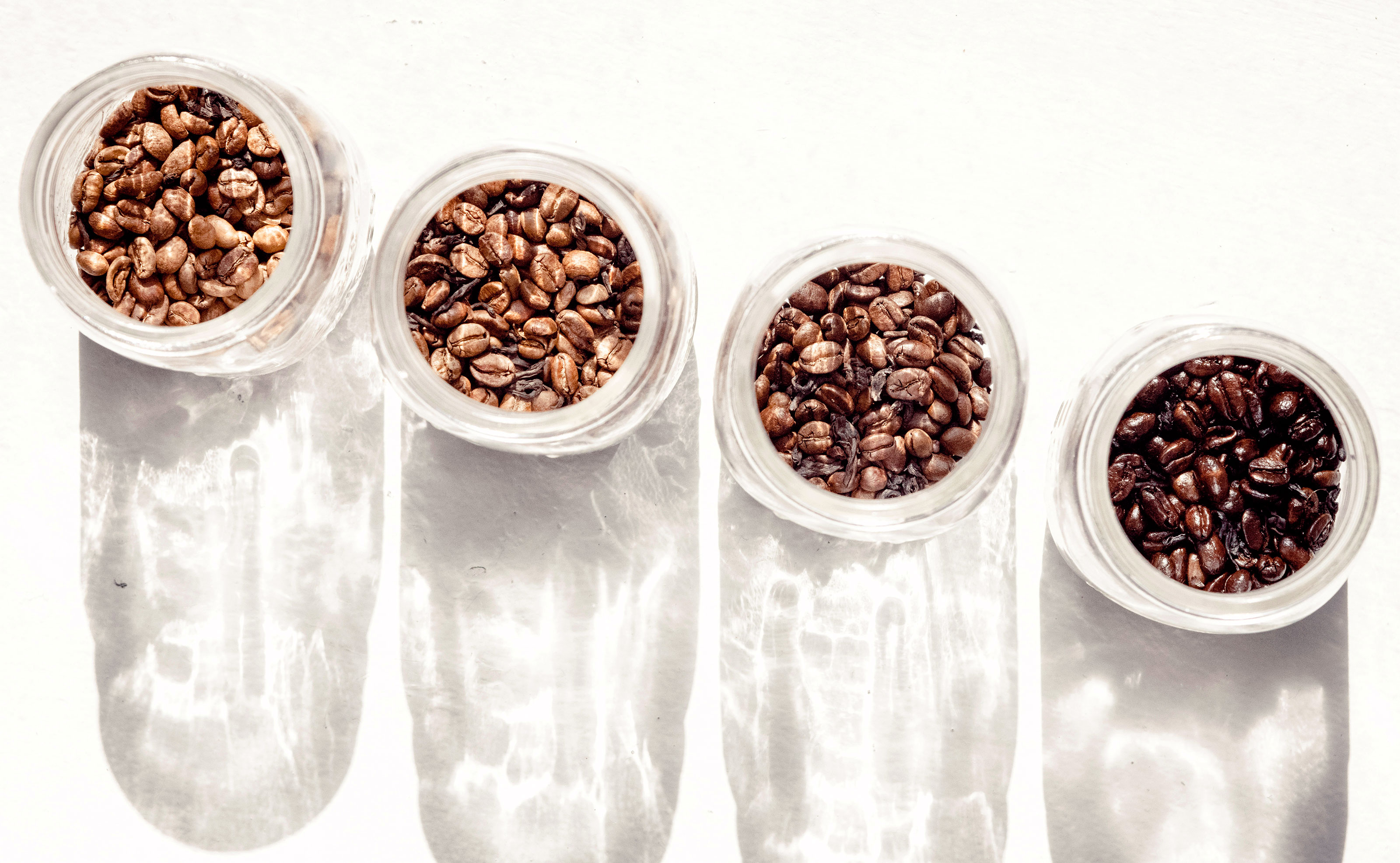The Different Types of Coffee Beans: What Makes Each Bean Unique (And Delicious)
If you thought all coffee beans were created equal, get ready to sip on some knowledge. There are actually four main types of coffee beans—and each one brings its own bold personality to your cup. From the smooth, crowd-pleasing Arabica to the wild and rare Liberica, your coffee’s flavor, aroma, and caffeine kick all start with the bean. Whether you're a curious beginner or a full-blown coffee nerd, this guide will help you understand the different types of coffee beans—and how to pick the right one for your brewing style..
Arabica (Coffea Arabica)
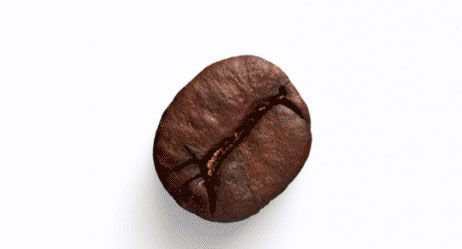
If coffee beans were celebrities, Arabica would be the elegant, award-winning actor who effortlessly wins over the crowd. Smooth, complex, and always photogenic (yes, we're talking about latte art too), Coffea Arabica is responsible for the rich, nuanced brews that grace specialty cafés and pour-over setups around the world.
But what makes Arabica so special? Let’s dive deep.
Origin & History
Arabica coffee is believed to be the first coffee species ever cultivated, with roots tracing back to Ethiopia, where wild coffee trees still grow in forests. It spread to Yemen, where Sufi monks used it to stay awake during long prayer sessions—sparking a centuries-long love affair with the bean.
In fact, the term “Arabica” comes from the Arabian Peninsula, where coffee culture blossomed in the 7th century.
Today, Arabica is grown in coffee belt regions around the world, including:
- Ethiopia
- Colombia
- Brazil
- Kenya
- Guatemala
- Honduras
- Costa Rica
It thrives in high-altitude, tropical climates—generally between 2,000 and 6,500 feet above sea level.
Genetic & Botanical Characteristics
- Scientific name: Coffea arabica
- Caffeine content: 1–1.5% (lower than Robusta)
- Shape: Oval bean with a curved crease
- Chromosomes: 44 (more than Robusta, giving it more genetic complexity and flavor potential)
Arabica plants are delicate and disease-prone, requiring more care and ideal conditions to thrive. This makes them more expensive to produce, but also why they're associated with higher-quality coffee.
Flavor Profile
Arabica is known for its smooth body and bright acidity, often with floral, fruity, and sweet notes. Depending on the origin and roast, you might taste:
- Berries (blueberry, strawberry, blackcurrant)
- Citrus (lemon, orange zest)
- Chocolate (especially in Central American coffees)
- Nuts (hazelnut, almond)
- Floral or tea-like qualities (especially Ethiopian beans)
Compared to Robusta, Arabica is:
- Less bitter
- Less earthy
- More aromatic
- More complex in flavor
Roast Compatibility
Arabica beans are incredibly versatile across roast levels:
- Light roast: Preserves bright acidity, floral and fruity notes
- Medium roast: Balanced flavor with caramel, chocolate, and soft fruit tones
- Dark roast: Less acidity, more body, with rich cocoa or smoky flavors (but too dark can mute Arabica’s nuance)
Best Brewing Methods
Arabica shines when brewed with methods that emphasize clarity and complexity, such as:
- Pour-over (V60, Chemex) – brings out its bright and clean characteristics
- French Press – for a fuller-bodied, aromatic cup
- Espresso – especially single-origin Arabicas from Colombia, Ethiopia, or Brazil
- Cold brew – a smoother, less acidic iced coffee
- Aeropress – great for showcasing fruity and floral notes
How to Buy Quality Arabica
When shopping for Arabica beans, look for:
- 100% Arabica on the label (many blends mix in cheaper Robusta)
- Single-origin coffee if you want distinct regional flavor
- Fresh roast date (aim to brew within 2–4 weeks of roasting)
- Whole beans over pre-ground for peak freshness
- Roaster transparency—quality brands often share roast profiles, altitude, and tasting notes
Fun Arabica Facts
- Arabica makes up around 60–70% of global coffee production.
- It grows slower than Robusta, but that longer maturation contributes to richer flavors.
- Arabica beans have twice the sugar content of Robusta beans, contributing to their natural sweetness.
- Specialty coffee competitions and cafes overwhelmingly use Arabica-only beans.
Why Choose Arabica?
Choose Arabica if you:
- Prefer smooth, complex coffee without intense bitterness
- Enjoy black coffee or manually brewed methods (like pour-over or Aeropress)
- Want to explore regional flavor profiles from around the world
- Appreciate quality over quantity
When to Skip Arabica
You might prefer a different bean (like Robusta or blends) if you:
- Want a strong, dark, bitter kick (especially in espresso)
- Need a super-caffeinated punch
- Prioritize cost over flavor complexity
If you appreciate subtle flavors, aromatic brews, and a smooth, crowd-pleasing profile, Arabica might just be your perfect bean match. It's the go-to for specialty coffee for a reason—and once you've had a great cup of Ethiopian Yirgacheffe or Colombian single-origin, there's no going back.
Robusta (Coffea Canephora)
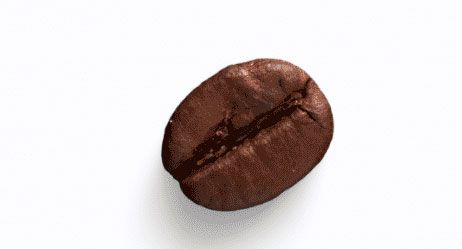
If Arabica is the smooth, elegant diplomat of the coffee world, Robusta is the no-nonsense bodyguard. It’s bold, powerful, and doesn’t care if you like it or not—it’s here to wake you up and get the job done.
Often overshadowed by its more refined cousin, Coffea Canephora (commonly known as Robusta) is the bean that powers espresso shots, instant coffees, and those who say, “I want my coffee strong and fast.”
Let’s peel back the crema and see what makes Robusta… robust.
Origin & Where It’s Grown
Robusta is native to sub-Saharan Africa and is now widely cultivated in:
- Vietnam (the world’s top Robusta exporter)
- Brazil
- India
- Uganda
- Indonesia
It grows best at lower altitudes (200–800 meters above sea level), thrives in hot, humid climates, and is far more disease-resistant and weather-tolerant than Arabica—making it easier and cheaper to grow.
Botanical & Genetic Traits
- Scientific name: Coffea canephora
- Caffeine content: 2.2–2.7% (almost twice that of Arabica)
- Shape: Rounder and smaller beans with a straighter crease
- Plant height: Grows taller and faster than Arabica
- Chromosomes: 22 (vs. Arabica’s 44—less genetic complexity)
Robusta’s higher caffeine content isn’t just for buzz—it’s a natural pesticide, which helps the plant fend off insects and diseases that plague Arabica crops.
Flavor Profile
Now, let’s talk taste. Robusta has a bold, punchy profile with a reputation for being:
- Bitter and earthy
- Nutty or woody
- Sometimes rubbery or ashy (in lower-quality beans)
- Low in acidity
- High in body
It’s not subtle. But it is powerful, especially when you want your coffee to act like a slap in the face. And yes, that’s exactly what some people love about it.
Roast Compatibility
Robusta is typically roasted dark to emphasize its strength and mask any harsher notes. However, high-quality Robusta beans can actually offer a deep, rich profile with:
- Dark chocolate
- Roasted nuts
- Tobacco or leather-like notes
- A thick, syrupy mouthfeel
Best Brewing Methods
Robusta is not shy. It thrives in brewing methods that bring out its bold body and bitterness, such as:
- Espresso – often blended with Arabica for strength and crema
- Moka pot – perfect for that strong, Italian-style stovetop brew
- French press – rich and bold with a heavy body
- Instant coffee – most brands use Robusta because of its solubility and punch
Pro tip: Look for 70/30 Arabica-Robusta espresso blends if you want the best of both worlds—smoothness with a kick.
Arabica vs. Robusta: Quick Comparison
| Feature | Arabica | Robusta |
| Caffeine | 1–1.5% | 2.2–2.7% |
| Flavor | Sweet, fruity, floral | Bitter, earthy, nutty |
| Acidity | High | Low |
| Crema (Espresso) | Light | Thick, rich crema |
| Cost | Higher | Lower |
| Resilience | Fragile | Hardy |
| Altitude | High (600–2000m) | Low (200–800m) |
When to Choose Robusta
Choose Robusta if you:
- Want a serious caffeine jolt
- Love bold, bitter flavors
- Prefer a thick crema in your espresso
- Need an affordable daily brew
- Enjoy your coffee with milk or sugar—Robusta punches through
Skip Robusta if you:
- Prefer smooth, fruity, or floral flavors
- Don’t like bitterness
- Are sensitive to caffeine
- Like lighter brews or tea-like clarity
Fun Facts About Robusta
- Instant coffee MVP: Most instant coffees use Robusta due to cost and caffeine.
- Espresso crema maker: Robusta is responsible for that signature golden crema in Italian espresso.
- Higher yield: Robusta plants produce more cherries per tree than Arabica.
- Climate change warrior: Its resilience makes Robusta a vital crop in the future of coffee farming.
Why Robusta Deserves More Respect
Robusta might not win over third-wave coffee snobs, but it’s a workhorse bean with purpose. It powers the world’s caffeine addiction with strength, reliability, and affordability—and when grown and roasted well, it can be surprisingly complex and satisfying.
Whether you're looking for a rocket-fueled espresso shot, a budget-friendly brew, or a bold blend, Robusta is the unsung hero in many a morning mug.
So next time someone calls Robusta the “cheap stuff,” hand them a cup of high-quality Vietnamese Robusta and let the flavor do the talking.
Liberica (Coffea Liberica)
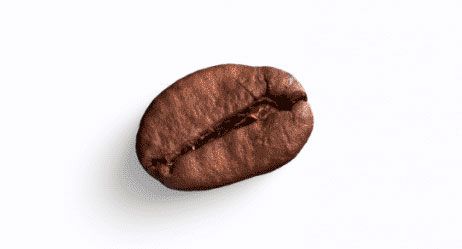
If Arabica is the refined artist and Robusta is the burly bodybuilder, Liberica is the offbeat indie musician of the coffee world—bold, quirky, and not afraid to hit some unexpected notes.
Coffea liberica may make up only a tiny fraction of global coffee production, but among coffee enthusiasts in Southeast Asia and beyond, it enjoys a cult following. With larger-than-life beans, distinctive aroma, and a taste that defies convention, Liberica is unlike anything else on the menu.
Where Liberica Grows
Liberica is native to West and Central Africa but has truly found a home in parts of Southeast Asia, particularly:
- 🇵🇭 Philippines – Known locally as Kapeng Barako, a cultural and regional staple
- 🇲🇾 Malaysia – Especially in Johor and Sabah
- 🇮🇩 Indonesia – Grown in Sumatra and Java
Because of its ability to grow in lowland areas and resist pests and disease, it’s a practical option for certain climates where Arabica struggles.
That said, Liberica is a rare gem—accounting for less than 2% of global coffee production.
Botanical Profile
- Scientific name: Coffea liberica
- Caffeine content: Roughly 1.2–1.5% (slightly more than Arabica, less than Robusta)
- Bean shape: Massive, asymmetrical beans—longer and more oval than any other type
- Aroma: Strong and often floral or fruity
- Plant height: Can grow up to 20 meters tall—like a literal coffee tree skyscraper
Its impressive height and large leaves give it an almost prehistoric appearance. And yes—it tastes just as wild.
Flavor Profile: Buckle Up
Liberica’s flavor is… well, divisive. Coffee drinkers either love it or politely change the subject.
Expect:
- Smoky, woody undertones
- Tart fruitiness (often likened to jackfruit, mangosteen, or dried berries)
- Floral, nutty, and herbal hints
- A full body and low acidity
- Occasionally a slightly funky or fermented aftertaste
It's robust but not Robusta—and while some find its eccentric profile an acquired taste, others fall in love with it at first sip.
Roast & Brew Tips
Because of its unique chemistry and bean size, Liberica can be tricky to roast evenly. Medium to dark roasts are most common, helping mellow the fruitiness and bring out the bean's natural boldness.
Best Brewing Methods:
- French Press – brings out its body and smokiness
- Espresso – for a truly bold and funky shot
- Pour-over – highlights its aromatic, fruity notes
- Traditional stovetop – especially in the Philippines with Barako-style brewing
🇵🇭 What is Kapeng Barako?
In the Philippines, Liberica is king, known as Kapeng Barako—literally "stud coffee" or "manly coffee." It's often brewed strong, served black, and enjoyed in the morning with native sweets or pan de sal.
Barako isn’t just a type of coffee—it’s a cultural identity, particularly in the Batangas region.
When to Try Liberica
Give Liberica a go if you:
- Love bold, aromatic, and unusual flavors
- Are tired of Arabica and Robusta and want something new
- Enjoy complex drinks like natural wines or barrel-aged cocktails
- Have an adventurous palate
- Appreciate full-bodied, low-acid brews
When to Skip Liberica
It may not be your cup of coffee if you:
- Prefer smooth, chocolatey, or balanced profiles
- Dislike fruity or fermented notes
- Want a clean, tea-like finish
- Are a coffee traditionalist who likes predictability in your cup
Fun Facts About Liberica
- The beans are HUGE—often 50% larger than Arabica or Robusta
- Was used in the 19th century to replace Arabica after coffee leaf rust devastated crops
- Some Liberica coffees are fermented or aged, adding wine-like complexity
- You might see it labeled as Excelsa—more on that in a separate post!
Why Liberica is the Coffee World's Best-Kept Secret
Liberica isn’t trying to be your everyday coffee—it’s here to be your memorable coffee. It’s a celebration of uniqueness, tradition, and terroir, offering a radically different sensory experience that challenges what you think coffee should taste like.
So if you're ready to break free from the Arabica-Robusta binary and explore a world of fragrant forests, tropical fruit, and smoky richness, take a walk on the wild side.
Brew a cup of Liberica and let your taste buds travel somewhere unexpected.
Excelsa (a variety of Liberica)
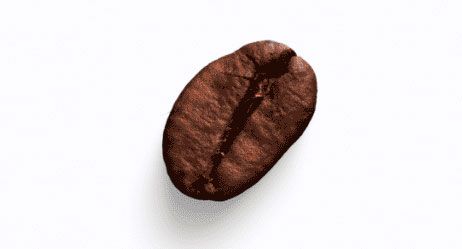
If Arabica is the artist, Robusta the muscle, and Liberica the eccentric, then Excelsa is the enigmatic storyteller—the kind that keeps you guessing until the last sip.
Often misunderstood (and frequently mislabeled), Excelsa is a coffee that walks the line between fruit-forward brightness and deep, roasty depth. It’s a shapeshifter in the cup, with a flavor profile that somehow does both high and low notes—and pulls it off with flair.
Let’s decode this elusive bean.
Where Excelsa Comes From
Originally discovered in Central Africa, Excelsa is now primarily grown in Southeast Asia, particularly:
- 🇻🇳 Vietnam – one of the largest producers
- 🇵🇭 Philippines
- 🇮🇩 Indonesia
While it was once considered a distinct species, Excelsa is now classified as a varietal of Liberica (Coffea liberica var. dewevrei). Still, its flavor is so unique that many experts and drinkers continue to treat it as its own category.
Botanical Profile
- Scientific classification: Coffea liberica var. dewevrei
- Caffeine content: 1–1.3% (similar to Arabica)
- Bean size: Smaller than Liberica, but still larger than Arabica
- Growth: Hardy, drought-resistant tree with deep roots
- Altitude: Grows well at both low and medium elevations
It’s often used in blends to add depth, complexity, and aroma, but high-quality single-origin Excelsa is gaining traction among specialty roasters.
Flavor Profile: Duality in a Cup
What makes Excelsa so special? Its ability to be bright and tart, dark and roasty, and weirdly harmonious—all at once.
Common tasting notes include:
- Tart tamarind
- Dark fruits (plum, blackberry)
- Roasted nuts
- Smoky or woody undertones
- Hints of lemon zest or spiced tea
It’s fruity without being acidic, bold without being bitter—a balancing act that makes Excelsa a favorite for adventurous coffee lovers.
Roast & Brew Recommendations
Excelsa shines best in medium to dark roasts, where its dual nature can really come alive. Lighter roasts can highlight its citrus and tartness, but it takes a skilled roaster to avoid sharpness or imbalance.
Best Brewing Methods:
- Pour-over – for clarity and to let the fruit notes sing
- French Press – to emphasize body and smoky richness
- Espresso – uncommon, but delivers a wild, complex shot
- Cold Brew – surprisingly refreshing and layered
Excelsa vs. Other Coffee Beans
| Bean Type | Caffeine | Acidity | Flavor Notes | Common Uses |
| Arabica | 1–1.5% | Bright | Floral, fruity, sweet | Specialty brews |
| Robusta | 2–2.7% | Low | Bitter, earthy | Espresso blends, instant coffee |
| Liberica | ~1.5% | Low | Woody, smoky, fruity | Regional specialty drinks |
| Excelsa | ~1.2% | Medium | Tart, fruity, roasty | Blends & bold single origins |
When to Try Excelsa
Excelsa might be your bean soulmate if you:
- Love adventurous, layered flavors
- Want something totally different from “standard” coffee
- Enjoy both fruity brightness and dark roasty tones
- Appreciate coffees that evolve as they cool
- Like blends with extra complexity
When to Skip Excelsa
You might want to pass if you:
- Prefer smooth, balanced coffee with fewer surprises
- Don’t enjoy tart or wine-like notes
- Stick to light breakfast blends or traditional espresso
- Are just starting to explore specialty coffee (this one’s out there)
Fun Facts About Excelsa
- Makes up less than 1% of global coffee production—super rare!
- Often mislabeled or hidden in blends (check labels carefully)
- Tasting it side-by-side with Arabica or Robusta is a great way to train your palate
- Some describe Excelsa as having a "layered narrative"—it changes dramatically between hot and cold
The Coffee World's Best-Kept Secret?
Excelsa is like jazz in a cup—unexpected, improvisational, and not for everyone. But for those who get it, there’s no substitute.
Whether it’s anchoring a complex blend or standing solo in a single-origin roast, Excelsa brings mystery and depth to the coffee conversation. It might not be your everyday cup, but it’s the one that sticks with you long after the last drop.
So if you're feeling bold, curious, or just tired of the usual suspects, take a sip of Excelsa and taste something rare.
Quick Comparison Table
| Bean Type | Taste | Caffeine | Body | Common Use |
| Arabica | Smooth, fruity, floral | Medium | Light to medium | Black coffee, specialty brews |
| Robusta | Bitter, earthy, nutty | High | Full | Espresso, instant coffee |
| Liberica | Smoky, woody, fruity | Medium | Full | Barako coffee, bold brews |
| Excelsa | Tart, fruity, complex | Medium | Light | Blends, rare single origins |
How to Choose the Right Bean for You
☑ Like sweet, tea-like notes? Go Arabica.
☑ Want coffee that kicks like a mule? Robusta is your friend.
☑ Looking for something funky and bold? Try Liberica or Excelsa.
☑ Prefer low acidity or chocolatey flavors? Consider medium-roast Robusta blends.
☑ Love trying new things? Explore single-origin beans from a specialty roaster—you might find a hidden gem.
There’s a Bean for Every Brew
Coffee isn’t just coffee—it’s an expression of taste, origin, and adventure. Whether you’re loyal to your Arabica or hunting down rare Liberica beans in some tucked-away roastery, knowing what’s in your cup makes every sip more satisfying.
Bonus: Coffee Bean Taste Test Guide: Arabica vs. Robusta vs. Liberica vs. Excelsa
A Flavor Showdown for the Curious Coffee Drinker
You’ve sipped your way through lattes, flirted with French press, maybe even flirted with espresso—now it’s time to taste coffee at its core. And we’re not talking roast levels or brew styles—we’re talking beans.
This guide walks you through a side-by-side tasting of the four major coffee bean types—Arabica, Robusta, Liberica, and Excelsa—so you can figure out which beans make your taste buds dance (and which ones stomp on them).
Let the Bean Olympics begin.
Your Mission:
Taste, compare, and judge each coffee bean based on aroma, flavor, body, acidity, and overall vibe. Bonus points for slurping dramatically like a pro.
What You’ll Need:
The Beans (Single-origin, similar roast level—ideally medium):
- 100% Arabica – Your smooth and fruity classic
- 100% Robusta – Bold, bitter, big on caffeine
- Liberica – Smoky, funky, and a bit weird (in a good way)
- Excelsa – Tart, fruity, dark, mysterious
Tip: Try to buy from the same roaster or brand so you're comparing apples to apples... or beans to beans.
The Gear:
- A French press, pour-over, or similar brewer (one or reuse for all)
- Grinder (if using whole beans—which you should)
- Digital scale (optional, but helpful for consistency)
- Kettle
- Timer
- 4 mugs or cupping bowls
- Pen + tasting sheet
- Water for palate cleansing
- Unsalted crackers (optional but fancy)
Brew It Like a Pro
French Press Recipe (for consistency):
- 15g coffee : 250g water (that’s about 1:16.5 ratio)
- Medium-coarse grind
- Steep for 4 minutes, then gently plunge
- No milk, no sugar—we’re keeping it honest
Let it cool a few minutes before sipping. Coffee flavors really show up around 130°F (or when it's no longer burning your face).
The Tasting Categories
Here’s what to pay attention to with each cup:
| Category | What You’re Looking For |
| Aroma | Sniff the dry grounds & brewed coffee. Floral? Nutty? Funky? |
| Acidity | Not sourness—think brightness or tangy sparkle |
| Body | Light like tea or heavy like hot chocolate? |
| Flavor Notes | Fruity? Chocolaty? Smoky? Like chewing a leather boot? |
| Bitterness | Balanced, sharp, or overpowering? |
| Aftertaste | Clean and crisp or lingering like a bad decision? |
Taste Like a Coffee Nerd
- Smell everything: dry grounds, wet brew, your kitchen afterward
- Slurp it: Yes, loudly. It aerates the coffee across your palate.
- Compare: Go back and forth between cups. Let each one cool a bit.
- Cleanse that palate: Sip water or nibble a plain cracker between cups.
Flavor Cheat Sheet
| Bean Type | Flavor Notes | Acidity | Body | Bitterness | Vibe |
| Arabica | Floral, fruity, sweet chocolate | High | Medium | Low | Smooth and sophisticated |
| Robusta | Earthy, bitter, nutty, woody | Low | Heavy | High | Strong and no-nonsense |
| Liberica | Smoky, jackfruit, floral, herbal | Low-Med | Full | Med | Wild and eccentric |
| Excelsa | Tamarind, dark fruit, roasted spice | Medium | Med | Med | Mysterious and layered |
Now What?
- Rank your beans—who’s your MVP?
- Try your favorite with different brew methods (espresso, cold brew, AeroPress).
- Snap a pic of your tasting setup and tag your local roaster (or your coffee nerd friends).
- Experiment with blend ratios (try Arabica/Robusta 70/30 for espresso with crema power!)
You Just Got Cupping Certified (Sorta)
Tasting coffee beans side by side isn’t just a fun experiment—it’s like speed dating for your palate. You'll learn what you love, what you hate, and what you never knew coffee could be.
Whether you fall hard for Arabica’s elegance, Robusta’s brute strength, Liberica’s funky forest vibes, or Excelsa’s fruity mind-bender energy—one thing’s for sure: your morning mug will never feel basic again.
